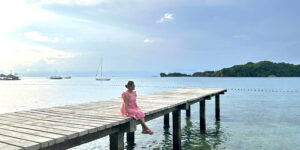
The Philippines ranked first on the list of global disaster risk hotspots based on the latest World Risk Index Report prepared by Germany-based Bündnis Entwicklung Hilft and the Institute for International Law and Peace and Armed Conflict (IFHV) at Ruhr University Bochum.
The index, which measures a country’s exposure and vulnerability to natural hazards, gave the Philippines an index score of 46.82. It was also one of the countries identified vulnerable to disasters caused by extreme natural events, which include earthquakes, storms or flooding.
India trailed in second place with an index score of 42.31, followed by Indonesia’s 41.46 and Colombia at 38.37. Mexico, Myanmar, Mozambique, China, Bangladesh and Pakistan also formed part of the world’s top 10 countries with the highest disaster risk scores.
The study assessed how 193 countries are more prone to disasters using an updated index, which now uses 100 indicators versus the previous 27.
In 2021, the Philippines ranked eighth on the risk index with a score of 21.39 and placed ninth among countries with the highest exposure to disaster. The country is battered by an average of 20 typhoons per year and sits in the Pacific Ring of Fire.
This year alone, the country has already been hit by a 7.0 magnitude earthquake with an epicenter in Abra which left 11 dead and affected over half a million Filipinos. It was most recently in the path of Super Typhoon Karding (international name Noru), which left 12 dead and affected 1.07 million people.
At this point in time, our disaster preparedness and prevention protocols and response should already among the most finely honed in the world, but despite the country being known as a global disaster risk hotspot, our disaster response procedures remain far from being considered world class.
The changing climate guarantees that as long as humanity fails to mitigate its effects, the risks that come with natural disasters are bound to increase. The only way to minimize this risk is through continuous improvement when it comes to preparation and response, which can only be done with more concrete actions instead of the usual motherhood statements.*







